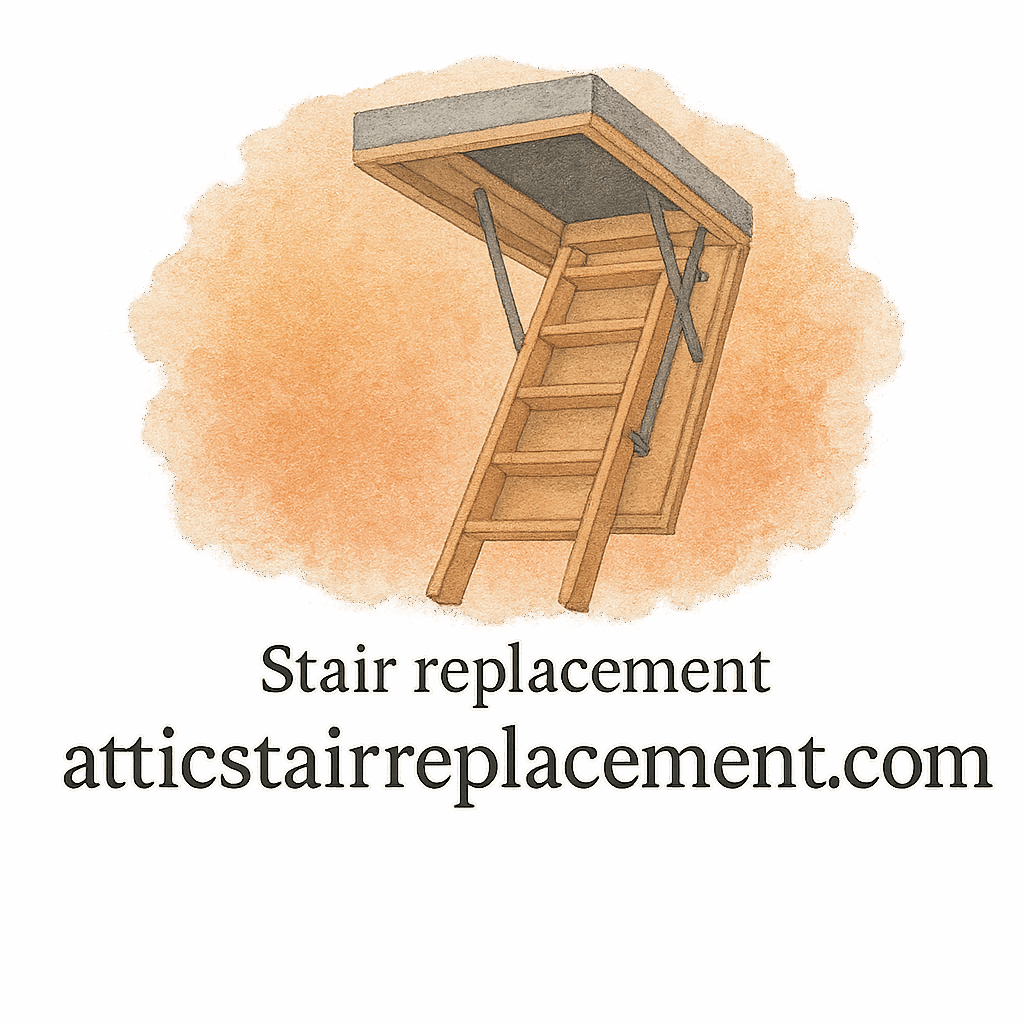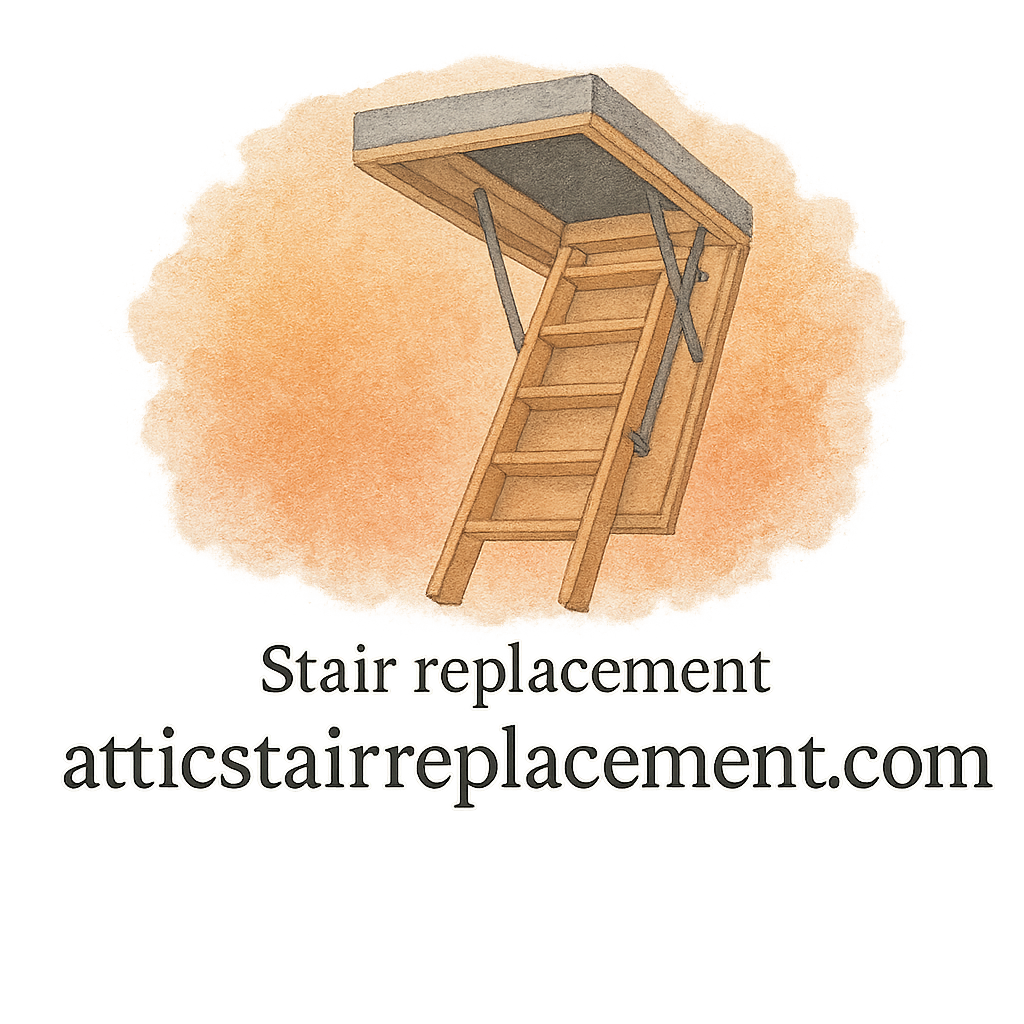Replacing your attic stairs might sound like a small project—but anyone who’s done it knows how quickly it can become a time-consuming hassle. The good news? With the right plan and a few smart shortcuts, you can speed up your attic stair replacement project and still get professional-level results.
Let’s explore seven proven ways to make this home improvement task smoother, quicker, and less stressful.
Why Attic Stair Replacement Matters
Hidden Risks of Old Attic Stairs
Old attic stairs aren’t just ugly—they’re dangerous. Wobbly steps, worn-out springs, or cracked wood can cause serious injuries. And if you’re using them often, those issues will only get worse over time.
Safety First: Avoiding Accidents
Stair-related falls are no joke. A fast attic stair replacement can help prevent accidents, especially if you’re doing regular storage runs up and down the attic. Quick doesn’t mean sloppy—it means prepared and precise.
For more about home safety and care, check out the tips at Attic Stair Replacement – Maintenance & Repair.
Preparation is Half the Battle
Measure Twice, Cut Once
Before doing anything, grab a measuring tape. Write down the exact dimensions of your current attic opening. If you skip this step or guess, you might end up with a replacement ladder that doesn’t even fit.
Tools You’ll Need
Make sure these are on hand before starting:
- Power drill
- Screws & anchors
- Stud finder
- Saw
- Safety goggles
- Ladder
Choosing the Right Ladder
Different attics need different ladder types. Wooden, aluminum, telescoping, or folding—all have pros and cons. Don’t rush this decision. Use helpful Product Reviews to make a smart choice.
Way #1: Opt for a Pre-Assembled Attic Ladder Kit
The Fast-Track Option
Pre-assembled kits are a godsend. They come ready to install, saving you from fiddling with parts. Some even have videos or manuals included for easy DIY Installation.
Product Reviews Can Help Decide
Not all kits are created equal. Check out unbiased insights on what really works at Attic Stair Replacement – Product Reviews before buying.
Way #2: Go the DIY Route (If You’re Handy)
Save Time and Money
Going DIY can cut costs and avoid contractor wait times. Plus, if you’re even a little handy, it’s very doable. Just follow a detailed DIY guide to get it right the first time.
Get Expert Advice Before You Start
Need a second opinion before diving in? Bookmark this expert advice hub to steer clear of rookie mistakes and get pro insights on your project.

Way #3: Hire a Pro for Quick Results
When to Call in a Contractor
If you’re short on time or not confident in your DIY skills, hiring a contractor can be faster—yes, even with the cost. Professionals bring speed, tools, and experience.
Checking Job Quality Before You Hire
Don’t pick a contractor blindly. Look at previous work, licenses, and customer reviews. A quality job now saves major repair work later.
Check the contractor tag for pro tips on hiring the right person.
Way #4: Schedule Everything in Advance
Avoid Last-Minute Hardware Store Runs
There’s nothing worse than running out of screws mid-install. Double-check your materials list and buy everything in one go. Time saved here can shave hours off your total project.
Keep Your Project on Track
Treat it like a real job. Set a weekend aside, notify housemates or family, and avoid distractions. If you’re committed, you’ll finish faster.
Check out the home improvement section for more planning tips.
Way #5: Choose Durable, Heavy-Duty Materials
Don’t Cut Corners on Quality
Speed is great, but not at the expense of longevity. A durable attic ladder might cost a bit more, but it won’t need replacing again in 2 years.
Maintenance-Free is Speed-Friendly
Heavy-duty materials typically require less maintenance. Want to avoid future repairs? Explore the strong and heavy-duty options that hold up over time.
Way #6: Learn from Others’ Mistakes
Read DIY Forums and Guides
The internet is full of stories from folks who’ve been where you are. Read about their successes and their failures.
Need a laugh or a warning? Check out common mistakes people make and how to sidestep them.
Avoid Common Pitfalls
Some typical blunders:
- Not checking ceiling joists
- Forgetting about insulation space
- Using the wrong screws
There’s no need to reinvent the wheel. Use these steps to build your process smarter.
Way #7: Keep Safety and Clean-Up in Mind
Clean Work Area = Faster Work Time
A cluttered workspace slows you down. Remove obstacles, sweep the floor, and prep the space before you lift a screwdriver.
Prevent Injuries and Delays
Wear proper gear. Gloves, goggles, and a buddy to help hold the ladder can prevent injury-related delays.
Check out how to prevent avoidable issues before they happen.
The Bottom Line
Get the Job Done Right and Fast
Speeding up your attic stair replacement doesn’t mean cutting corners—it means working smarter. Whether you choose a DIY path or call in the pros, use these tips to make the project quicker, safer, and more effective.
Want even more helpful advice? Browse topics like remodel, renovation, and install to continue your home upgrade journey.
FAQs
1. How long does it typically take to replace attic stairs?
If you’re prepared, it can take 2–4 hours for a DIY project and even less if done by a contractor.
2. What’s the best type of attic ladder for quick installation?
Pre-assembled aluminum ladders are usually the fastest and easiest to install.
3. Can I install attic stairs by myself?
Yes, if you’re handy and follow a good DIY guide. But having an extra pair of hands helps.
4. How much does a professional attic stair replacement cost?
Anywhere from $300 to $800 depending on labor and material costs.
5. Do I need a permit to replace attic stairs?
Usually not, but always check local building codes before starting.
6. What’s the most common mistake people make?
Poor measurements! Always double-check before cutting or buying anything.
7. Where can I find expert reviews and advice?
Visit Attic Stair Replacement for trusted product reviews, tips, and more.


